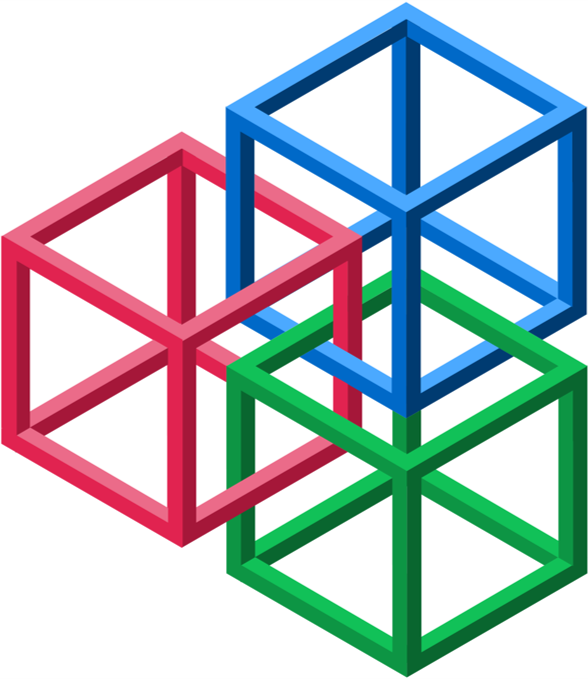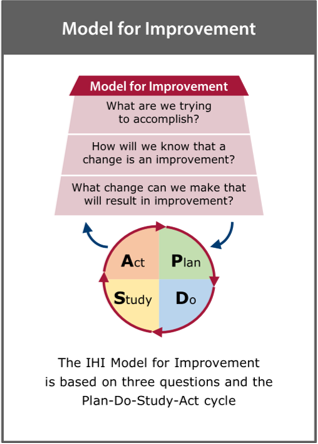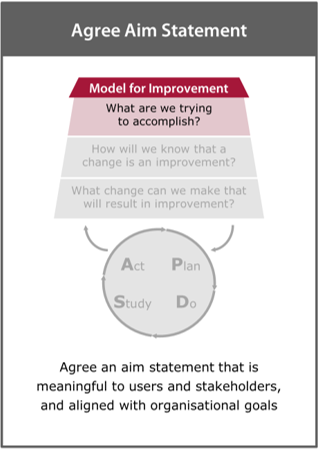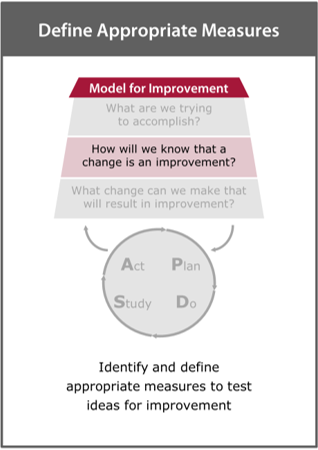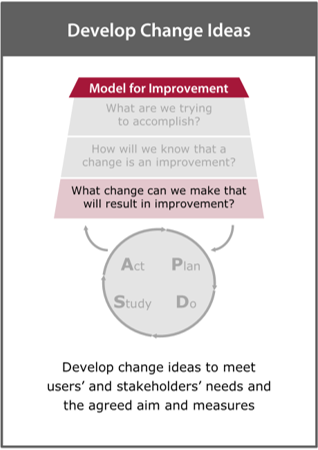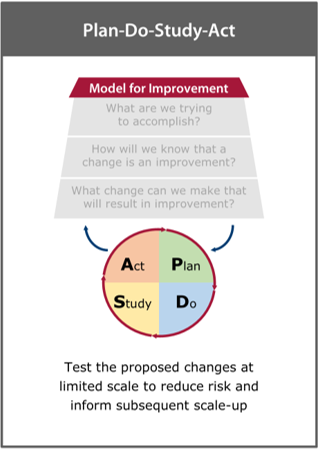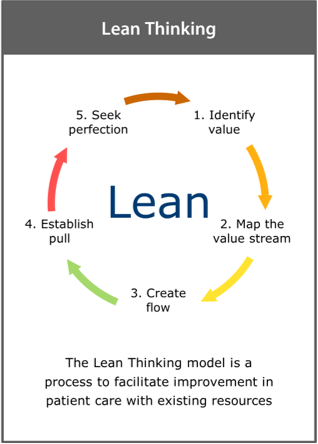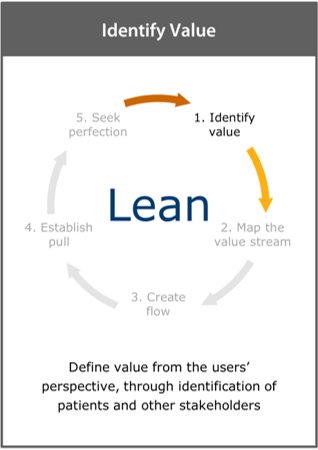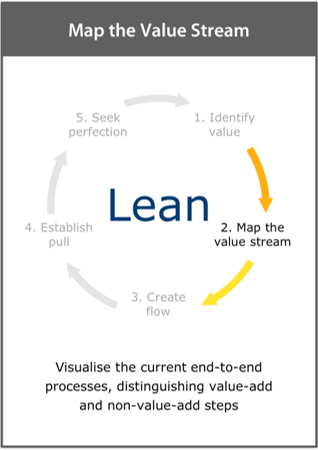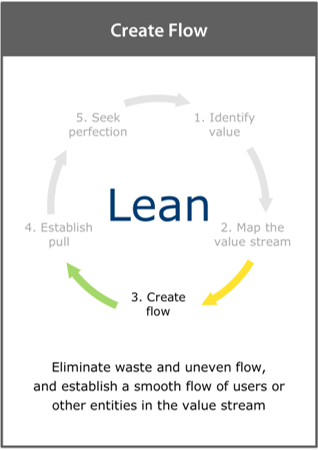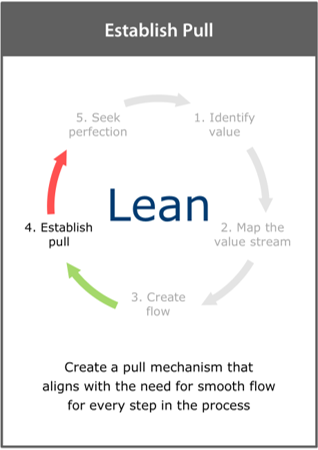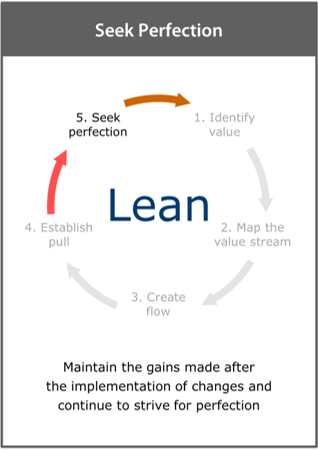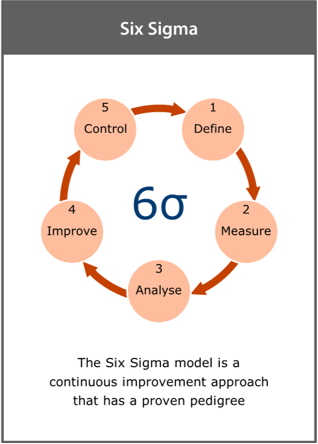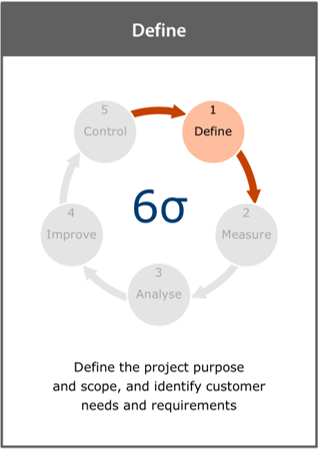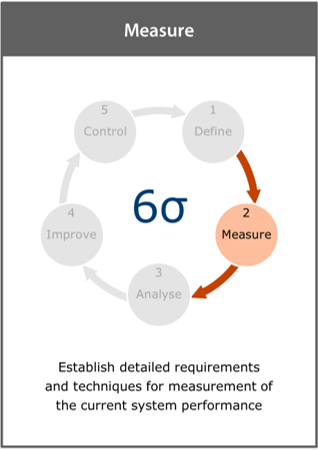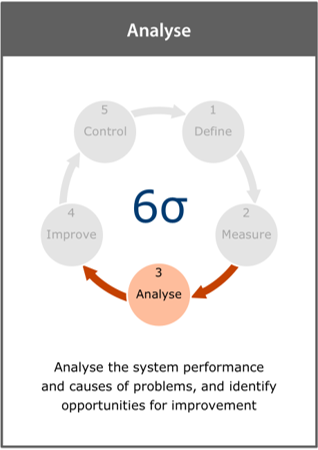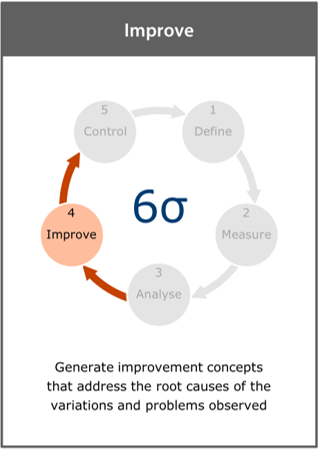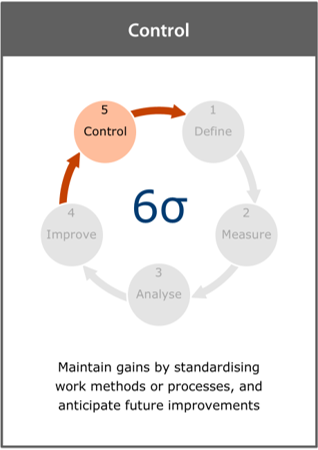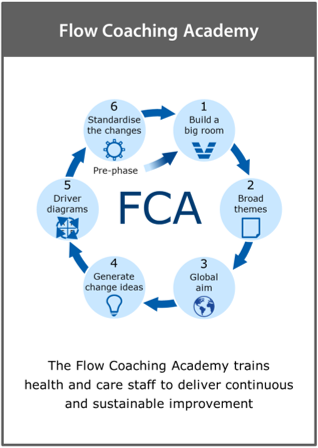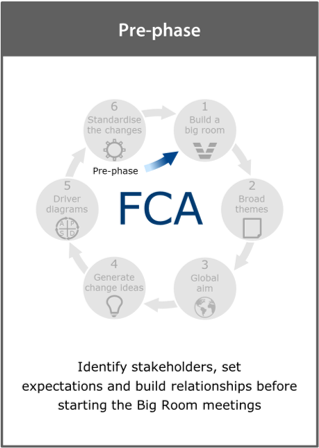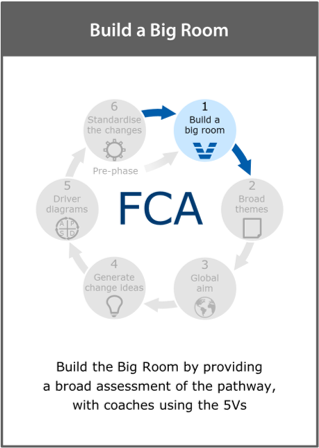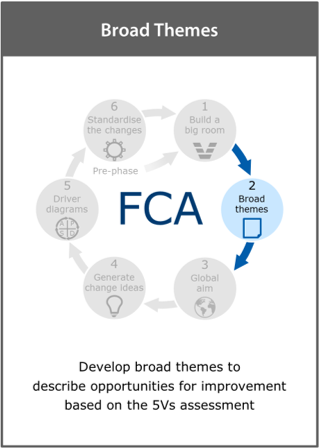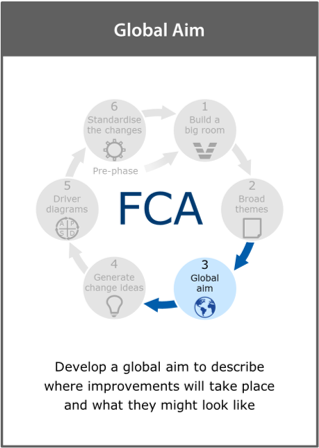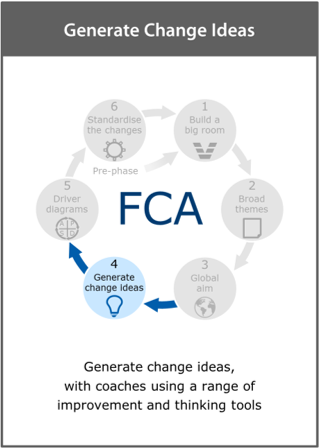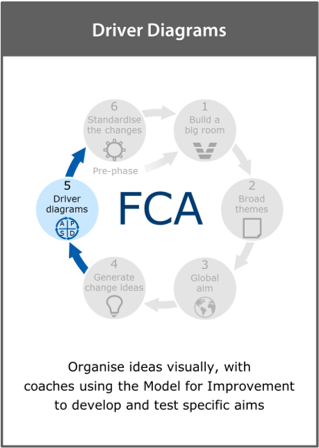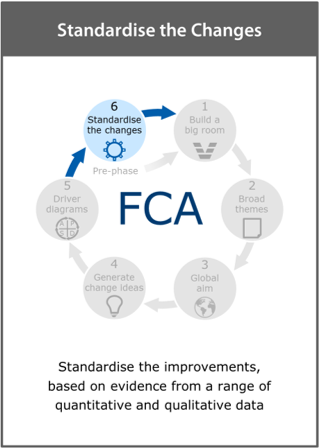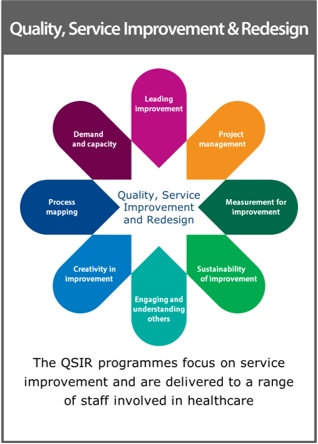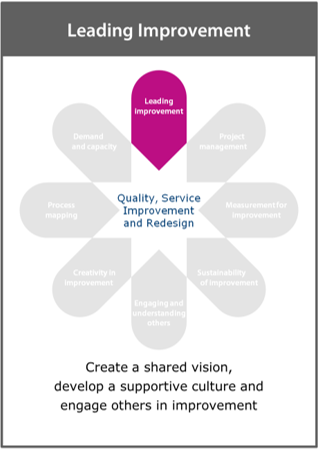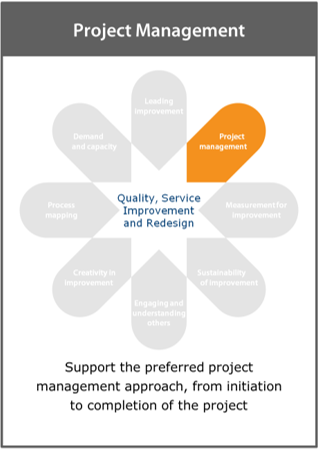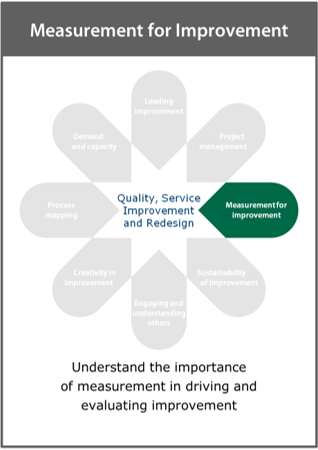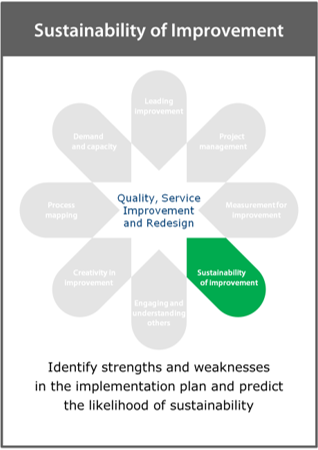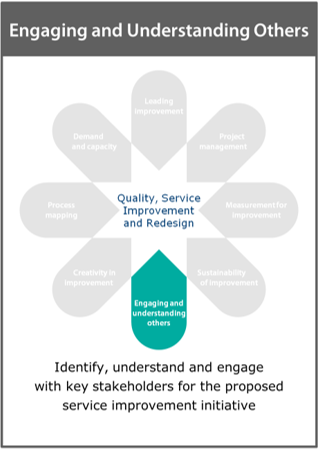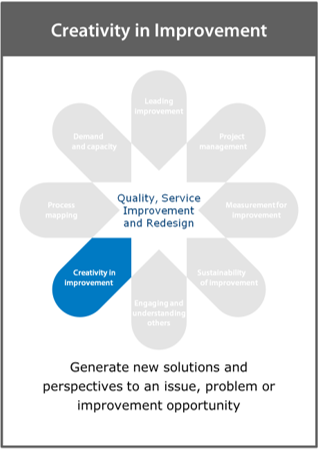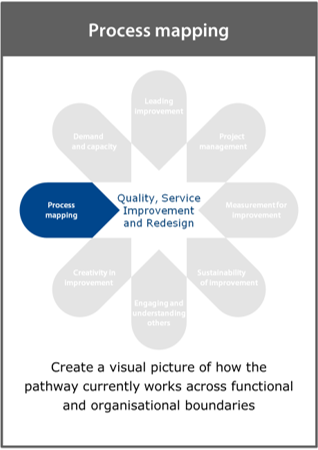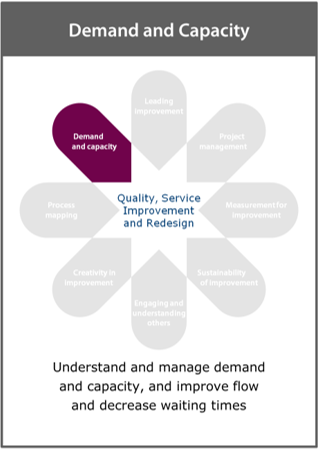This introduction describes a number of frameworks that are designed to deliver a systems approach to health and care design and continuous improvement.
Contents
Introduction
Frameworks are an important part of any toolkit, but are only as good as the people that use them and only effective when used to accomplish appropriate activities. Frameworks in the hands of novices may require careful instruction or benefit from some form of training or apprenticeship. Frameworks in the hands of experts may feel like an extension of the master working their trade, used for their intended purpose or adapted for other purposes. Frameworks are typically designed with a particular purpose and types of challenge in mind and optimised for the purpose, however, many may be usefully adopted for related tasks.
The frameworks highlighted in this toolkit are largely off-the-shelf, established and well used. Simple guidance is provided for their use and reference given to resources that describe them in more detail. The intention is not to provide full instructions for their use here, rather to point to their existence and indicate where they might be used. The elements of each framework are presented together, with reference to the pages on which they may be found.
Useful toolkit resources: Cards for each of these frameworks are included in the Resources part of this toolkit. A number of blank cards are included to allow additional frameworks to be added.
List of Frameworks
Model for Improvement
Lean Thinking
Six Sigma
Flow Coaching Academy
Model for Improvement
Overall Framework
The model for improvement was developed by the Associates in Process Improvement as a tool for accelerating improvement and has been adopted by the Institute of Healthcare Improvement as its primary framework for improvement in healthcare. The model has two parts: three fundamental questions, which can be addressed in any order; and the Plan-Do-Study-Act cycle to test changes in real work settings in order to determine if the change is an improvement.
First Question
The focus of the first question, What are we trying to accomplish?, in the IHI Model of Improvement is the agreement of a SMART aim statement that is meaningful to the users and stakeholders, and aligned with organisational goals. General project issues are also addressed at this stage, such as creation of the team, initial exploration of the problem area and needs, definition of a clear scope for the improvement, and engagement of key stakeholders.
Second Question
The second question, How will we know that a change is an improvement?, relates to the identification and definition of appropriate measures to test ideas for improvement. These may include outcome, process and balancing measures, proposed by the stakeholders, to ensure the agreed improvement aim is met.
Third Question
The third question, What change can we make that will result in improvement?, addresses the development of change ideas, in response to users’ and stakeholders’ needs and the agreed aim and measures. The use of creative thinking and exploration, along with the visualisation of current processes and evidence, are proposed as a means to stimulate ideation, concept development and selection.
Plan-Do-Study-Act
Plan-Do-Study-Act (PDSA) initially focuses on testing the proposed changes at limited scale to reduce risk, and then on learning from subsequent cycles to inform the scale-up of the changes. Hence, PDSA cycles also relate to second question on measures, measurement and data, and to the third regarding the current system and processes.
Lean thinking
Overall Framework
Lean thinking is an approach to improvement developed at Toyota in the 1950s to create the Toyota Production System. It is a strategic approach that focuses on dramatically improving flow in the value stream and eliminating waste. It initially came to prominence in health and care systems through The Productive Series: Releasing Time to Care1, a programme developed by the NHS institute for Innovation and Improvement and has been the subject of other reports on methods for improvement.
Identify Value
The first principle of lean thinking relates to general project issues, such as: the creation of the team, definition of the project aim, scope and plans, and creation of a sense of urgency; exploration of the problem and its context; and investigation of the high-level system processes, their elements, interfaces and boundaries. There is particular focus of the definition of value from the users’ perspective, through the identification of patients and other stakeholders, capture of their views, and understanding of their problems, needs and expectations.
Map the Value Stream
The second principle focuses on the elaboration of the high-level system processes previously captured. Process maps are used to visualise the current end-to-end processes in some detail, distinguishing value-add and non-value-add steps. For a step to add value, a user or stakeholder must care about it, it must change them or knowledge about them, and it must executed right first time. If these criterion are not met, that step is deemed to be waste. The timing of the process steps is also reviewed in the light of identifiable priorities, potential bottlenecks and constraints.
Create Flow
The third principle focuses on the elimination of waste, avoidance of uneven flow, batching and queuing, and establishment of a smooth flow of users or other entities in the value stream. Lean fundamentals and standard solutions to common problems are considered to develop ideas for the elimination of waste and improvement of flow. A new value stream is proposed and gaps between this and the current state identified and reviewed.
Establish Pull
The fourth principle focuses on letting the users or stakeholders pull value rather than pushing it, without delay or reliance on excessive resources. Creation of a pull mechanism aligns with the need for smooth flow, where every step in the process should pull people, skills, materials and information as required. This requires good evaluation of resource usage against demand, and communication and visibility of the progress being made.
Seek Perfection
The fifth principle emphasises the importance of maintaining the gains made after the implementation of changes and the continuous effort for achieving perfection. The performance of the revised system, along with the perceptions of users and stakeholders about the new practices, are monitored. This involves a mix of training, measurement, documentation and visualisation in order to remove barriers, and sustain and spread improvements.
Six Sigma
Overall Framework
Six sigma is an approach to improvement developed at Motorola in the 1980s, which focuses on removing the causes of defects and reducing variation in processes. It has a meticulous focus on understanding wide-ranging customer needs, prioritising these and designing processes and systems to deliver to those needs. Its purpose is derived from the desire to achieve a performance level equivalent to a defect rate of 3.4 defects per million opportunities. Six sigma uses a disciplined and systematic approach to look at the improvement journey from a number of related perspectives: define; measure; analyse; improve; and control (DMAIC).
Define
The first stage of the six sigma process involves clarification of the project opportunity, creation of the team, definition of the problem aim and scope, identification of the users and stakeholders, description of measures of success, and agreement of the major milestones. Particular importance is given to the voice of users and stakeholders, and its translation to critical-to-quality (CTQ) trees which illustrate how their needs map to actionable system performance requirements, and facilitates understanding about the current processes and opportunities for improvement. Potential benefits to the users and stakeholders are also considered in the light of the resources and time required to deliver such improvement.
Measure
The second stage establishes the detailed requirements and techniques for measurement of the current system performance, in order to capture a true picture of the process. This will include the identification of measures of variance and different types of data, definition of key process input and output variables, development of a data collection plan, and an initial system analysis on data collected.
Analyse
The third stage focuses on the detailed analysis of system performance data, examination of different sources of variability, determination of cause and effect relationships and root causes of problems, and identification of specific opportunities for improvement.
Improve
The fourth stage involves creative thinking and the generation of improvement concepts that address the root causes of the variations and problems observed. These concepts are subsequently evaluated, prioritised, piloted and implemented. A future-state system process map is used to visualise the impact of the proposed changes, identify the gaps between the current and future states, and enable risk assessment of the proposed system. Cost/benefit analysis and planning for full-scale implementation are also undertaken at this stage.
Control
The final stage focuses on institutionalising and controlling the improved processes. This includes process monitoring, preparation of training documents, control and reaction plans, and documentation of before and after results and updated process maps.
Flow Coaching Academy
Overall Framework
The Flow Coaching Academy provides a virtual/digital action-learning approach to delivering meaningful change within the NHS. It recognizes the need to deliver not only effective Quality Improvement training, methods and tools, but also a structure to provide the rhythm and pace for improvement. This is achieved by training a pair of coaches from within a specific patient care pathway, whilst creating a community of coaches from national networks and teams located in multiple places.
Pre-phase
The pre-phase is the first and most vital step on the roadmap. Here coaches spend time identifying stakeholders, setting expectations and building relationships before starting the Big Room meetings. Coaches can expect to revisit pre-phase activities throughout the life of the Big Room. Initial pre-phase activities typically take 3-5 months from the beginning of coach training.
Build a Big Room
The 5Vs (Value, inVolve, Visualisation, eVidence and Vision) help to build the Big Room by providing a broad assessment of the pathway. Coaches will start this process and build upon the 5Vs with the Big Room. Whilst the process is started during pre-phase coaches and Big Room participants regularly refer back to them, particularly when considering a new change idea.
Broad Themes
Once the Big Room is confident the 5Vs have provided a comprehensive assessment of the pathway, coaches help the Big Room develop broad themes which describe opportunities for improvement based on the assessment.
Global Aim
From the themes the Big Room develops a global aim which describes the processes where improvements will take place, what they expect the improvement to look like and a statement about why it’s important to work on this.
Generate Change Ideas
When generating change ideas coaches have a range of improvement and thinking tools to help the Big Room develop ideas they can test.
Driver Diagrams
Driver diagrams help the Big Room organise their ideas and aims in a visual and original way. Coaches then use the Model for Improvement to help the Big Room develop specific aims which can be tested through plan, do, study, act cycles. Initially starting with small tests the scale of test increases based on data, evidence and the confidence of the Big Room.
Standardise the Changes
Once improvement is evidenced with a range of quantitative and qualitative data the Big Room may decide to standardise the improvements.
Quality, Service Improvement and Redesign
Overall Framework
Successful service improvement programme that has been delivered over many years to hundreds of staff involved in healthcare. Delivered in a variety of formats to suit different levels of improvement experience, the QSIR programmes are supported by publications that guide participants in the use of tried and tested improvement tools and featured approaches and encourage reflective learning.
Leading Improvement
Tools, models and frameworks to help an improvement leader to create a shared vision and to manage the challenges of developing a supportive culture and engaging others in improvement (e.g. case for change, mind-set changes, and aligning improvement and vision).
Project Management
Tools, models and frameworks to support the preferred project management approach, from the initiation to the completion of a project (e.g. qualitative data, six stage approach for project management, SMART goals, project charters, and model for improvement including PDSA cycles).
Measurement for Improvement
Topics, tools and techniques to help organisations, teams and individuals understand the importance of measurement for improvement (e.g. the perils of RAG ratings, understanding variation, defining your aim, driver diagrams, run charts/ SPC charts, and investment for improvement).
Sustainability of Improvement
Tools and techniques to identify strengths and weaknesses within implementation plans and predict the likelihood of sustainability for improvement initiatives (e.g. sustainability frustrations, factors affecting sustainability, and applying the NHS Sustainability Model).
Engaging and Understanding Others
Tools and techniques to identify, understand and engage with key stakeholders for service improvement initiatives (e.g. stakeholder identification and communication, engaging clinicians, involving patients, human dimensions of change, and working with resistance).
Creativity in Improvement
Tools and techniques to assist with the generation of new solutions and perspectives to an issue, problem or improvement opportunity (e.g. mental valleys, creative techniques to explore problems, observation, idea generation, harvesting ideas, and testing new ideas).
Process Mapping
Tools and techniques to create a visual picture of how the pathway currently works within a team and across functional and organisational boundaries (e.g. what is a process map?, identifying sources of waste, current and future state mapping, and facilitating a mapping event).
Demand and Capacity
Tools and techniques to better understand and manage demand and capacity in any environment, and to improve flow and decrease waiting times (e.g. understanding demand, capacity, activity and backlogs, understanding flow, why do we get queues?, and how do we balance demand and capacity?).
Feedback
We would welcome your feedback on this page:
Privacy policy. If your feedback comments warrant follow-up communication, we will send you an email using the details you have provided. Feedback comments are anonymized and then stored on our file server
Read more about how we use your personal data. Any e-mails that are sent or received are stored on our mail server for up to 24 months.


